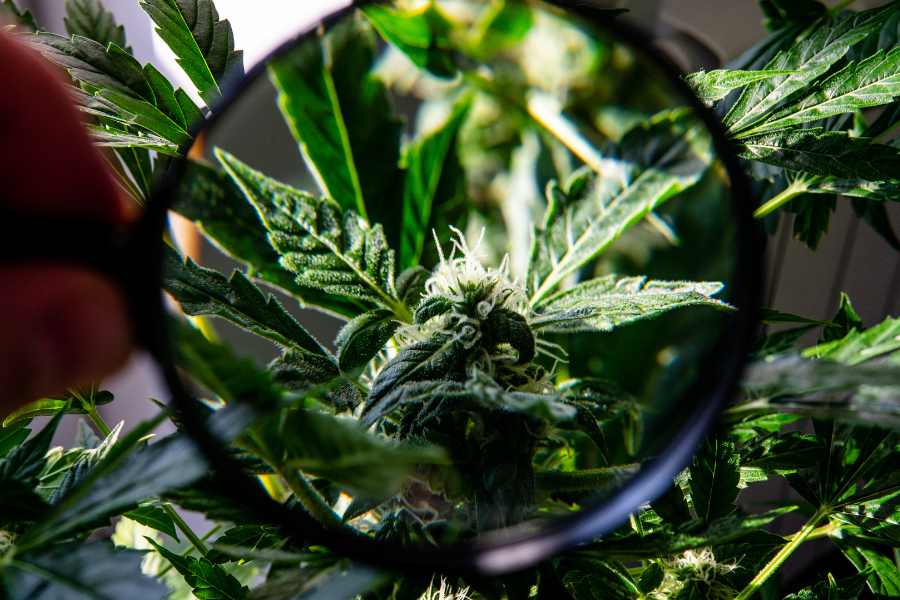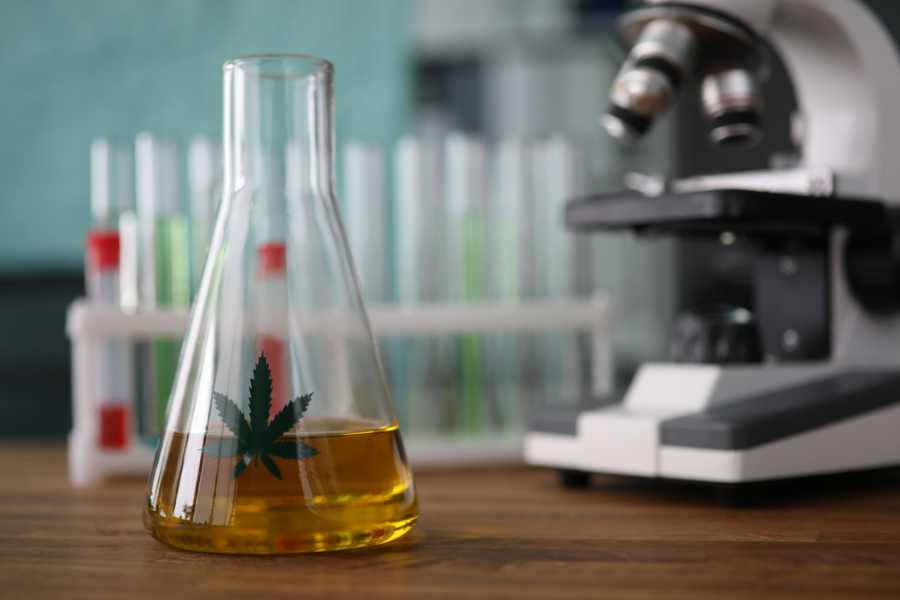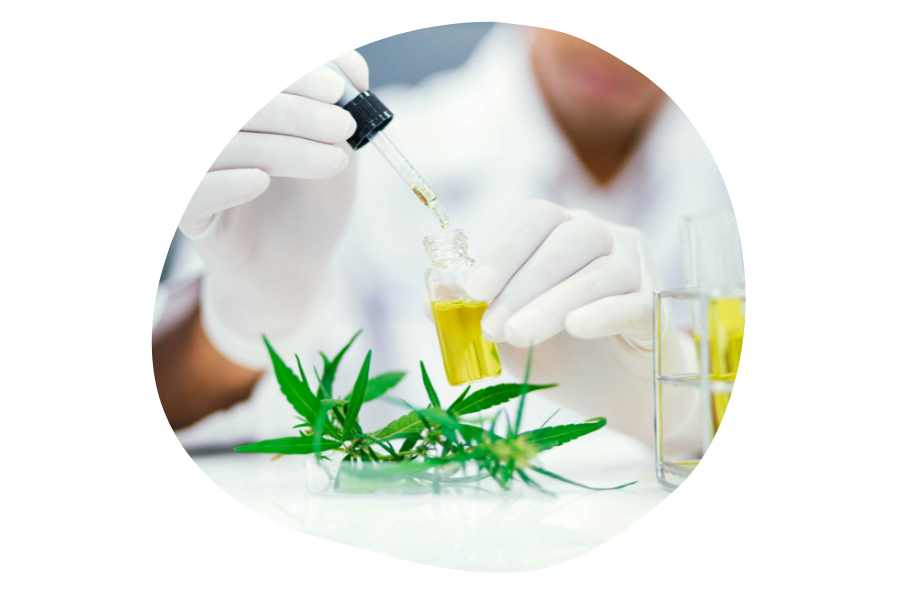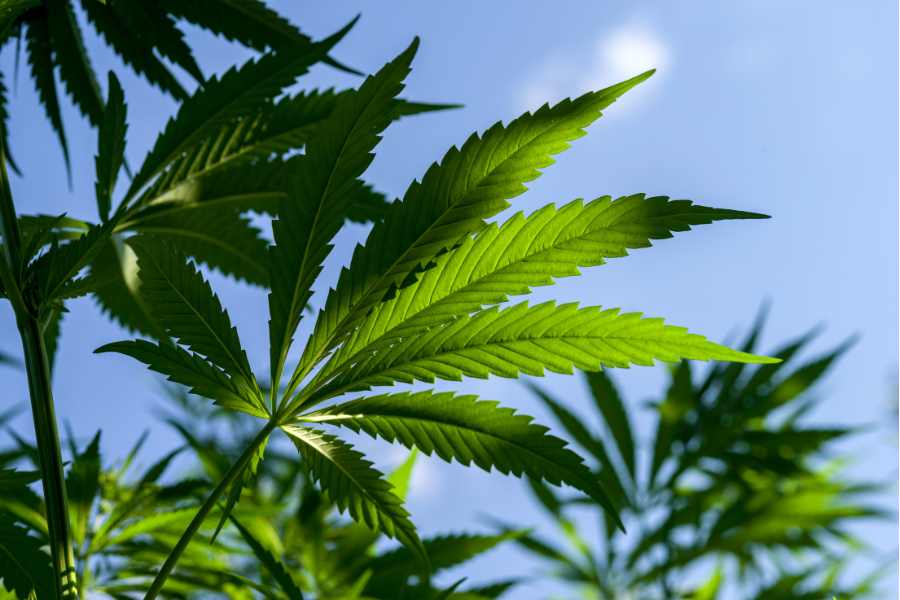The Truth About Cannabinoid Receptors! | Endocannabinoid System
*If you buy a product, I'll make a commission at no extra cost to you!*
Did you know that cannabinoid receptors are crucial for regulating daily sensations?
Cannabinoid receptors in your body exist in the endocannabinoid system. Without this system, you wouldn’t be able to feel the effects of cannabis!
The Endocannabinoid System was recently discovered by scientists researching the impact of cannabis on the human body.

They found that the human body has cannabinoid receptors, which are cell proteins that respond to chemicals, dispersed throughout the body.
Additionally, chemicals called endocannabinoids(ES) interact with these receptors to maintain health.

Marijuana has two main active compounds, THC (tetrahydrocannabinol) and CBD (cannabidiol), that are chemically similar to the natural endocannabinoids in the human body.
This discovery of the ECS and cannabinoids has generated a great deal of scientific interest.
Here’s how cannabinoids can be used to promote wellness and alleviate symptoms of the disease.
Table of Contents

The endocannabinoid system (ECS) is a complex system that’s responsible for regulating a number of physiological processes in the body.
It is comprised of endocannabinoids, which are naturally produced in the body, and cannabinoid receptors, which are found throughout the body.
The endocannabinoids interact with the cannabinoid receptors to help maintain balance and homeostasis in the body.
What Is The ECS?

ECS operates through three fundamental components:
- Endocannabinoids
- Cannabinoid Receptors
- Enzymes
Endocannabinoids are molecules produced by the body and are similar to cannabinoids.
Two key endocannabinoids have been identified so far – anandamide (AEA) and (2-AG) – that help maintain proper internal functions.
However, it’s challenging to determine typical levels of each endocannabinoid as the body produces them as needed.
Endocannabinoid receptors are found throughout the body and endocannabinoids bind to these to signal the ECS to take action.

There are two main endocannabinoid receptors, CB1 receptors(located mostly in the central nervous system), and CB2 receptors(mostly found in the peripheral nervous system).
The effects of endocannabinoids depend on which receptor they bind to.
For example, endocannabinoids targeting CB1 receptors in the spinal nerve can relieve pain, while others binding to CB2 receptors in immune cells signal the presence of inflammation in the body.

Blue Dreams - 2G Disposable (Sativa)
from: Happi

Enzymes are responsible for breaking down endocannabinoids once they have fulfilled their function.
The two main enzymes responsible for this process are fatty acid amide hydrolase, which breaks down AEA, and monoacylglycerol acid lipase, which typically breaks down 2-AG.

Scientists believe that cannabinoid receptors evolved in primitive animals over 600 million years ago.
They believe that it’s a fundamental aspect of life and adaptation.
Although there has been a significant amount of research on cannabinoids, there’s still more to discover!
The complexity of interactions between cannabinoids, cell types, systems, and organisms continues to challenge scientists.
What Are Cannabinoids?
Cannabinoid receptors are found throughout the body and are believed to be more abundant than any other receptor system.
The stimulation of these receptors results in various physiological processes.
CB1 and CB2 are the main cannabinoid receptors in the body.

CB1 – is primarily located in the nervous system, connective tissues, gonads, glands, and organs.
CB2 – is mainly found in the immune system and its associated structures.
Researches believe that there may be a third cannabinoid receptor yet to be discovered.
Benefits Of Cannabinoids In The Body

As the understanding of cannabinoid advance, it’s clear that a healthy endocannabinoid system is crucial for health.
This raises the question: can using marijuana improve the endocannabinoid system and promote health?
Research indicates that small doses of cannabinoids can increase endocannabinoid production and build more cannabinoid receptors.
This leads to increased sensitivity to cannabinoids and enhanced baseline ED activity.
Natural marijuana contains over 100 cannabinoids, including THC, and has been shown to be more effective than synthetic cannabinoids.
It also has fewer side effects.
As more research is done on cannabinoid receptors, the more benefits medical marijuana is believed to have for users.

DazeD8 OG Blenz Shatterwalkerz 8-Pack Pre-Rolls (1.5g) For Sale Online
from: D8 Super Store

CBD has a weaker binding effect on CB1 and CB2 receptors and impacts the ECS through indirect methods, such as blocking enzymes.
CBD has been the subject of studies for its therapeutic use in treating various conditions, including anxiety and addiction.
On the other hand, THC binds strongly to CB1 and CB2 receptors and helps with pain, appetite, and mood.
THC is 20 times more anti-inflammatory than aspirin and twice as potent as hydrocortisone.
THC also interacts with other receptors and enzymes in the body, with potential benefits such as treating addiction and reducing transplant surgery complications.
Endocannabinoids In A Nutshell
Overall the Endocannabinoid System plays a crucial role in regulating the human body.
It operates through endocannabinoids, receptors, and enzymes, and has two main receptors(CB1 and CB2).

Marijuana contains two main active compounds, THC and CBD, which interact with the endocannabinoid system.
Small doses of cannabinoids have been shown to increase endocannabinoid production.
As public demand grows, medical marijuana is being recognized as a safe and natural solution for promoting the body’s self-healing capabilities.







